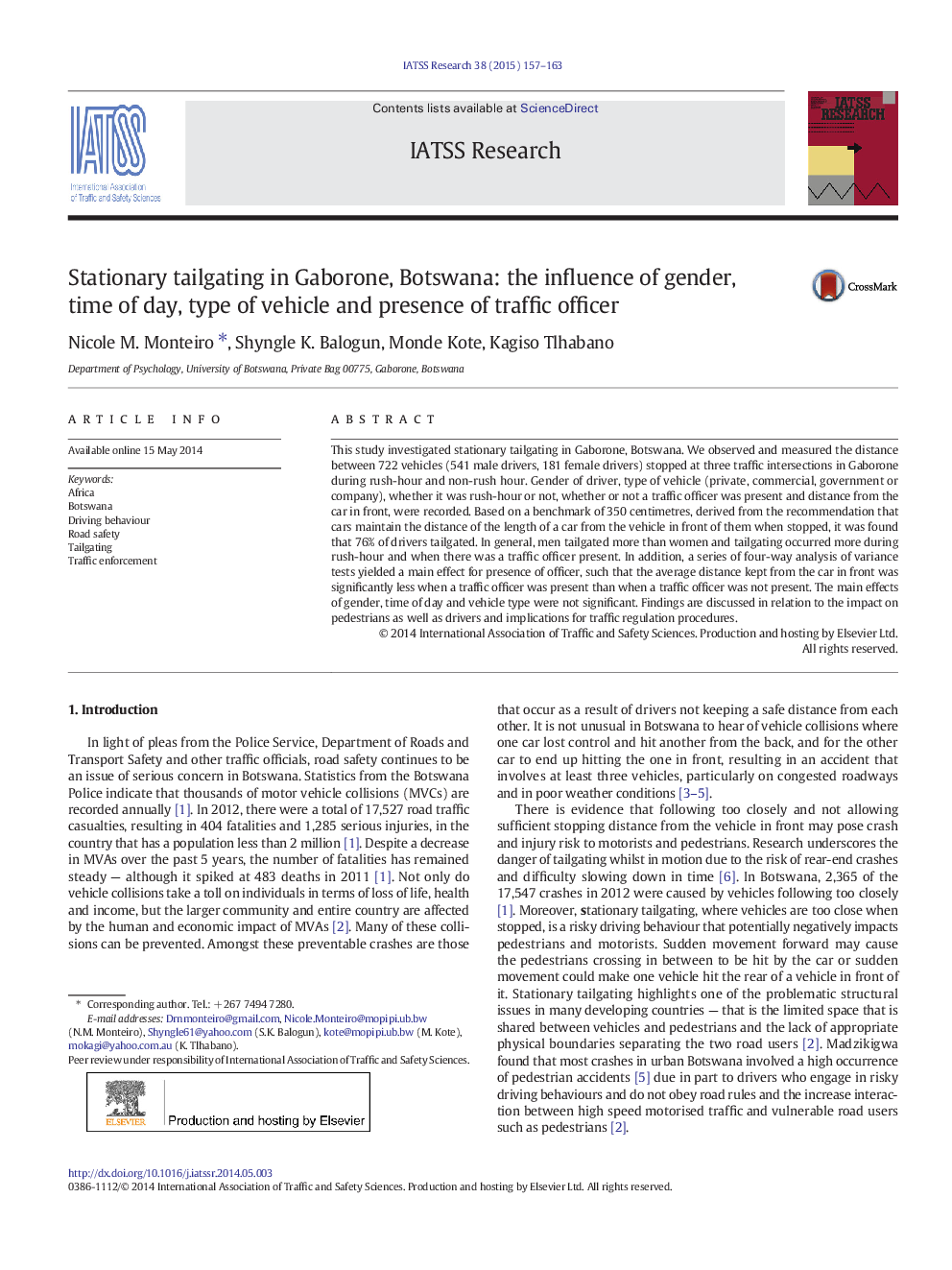| Article ID | Journal | Published Year | Pages | File Type |
|---|---|---|---|---|
| 1104679 | IATSS Research | 2015 | 7 Pages |
•We measured stationary tailgating at 3 locations in Gaborone during rush hour and non-rush hour.•A large percentage of drivers, about three quarters, were found to tailgate.•Men were more likely than women to tailgate.•Tailgating was more likely when a traffic officer was present.•It is, thus, likely that the presence of a traffic enforcer acts more as a structural variable that affects the general flow of traffic.•It is important to appreciate stationary tailgating in the context of its impact on pedestrians crossing at intersections.
This study investigated stationary tailgating in Gaborone, Botswana. We observed and measured the distance between 722 vehicles (541 male drivers, 181 female drivers) stopped at three traffic intersections in Gaborone during rush-hour and non-rush hour. Gender of driver, type of vehicle (private, commercial, government or company), whether it was rush-hour or not, whether or not a traffic officer was present and distance from the car in front, were recorded. Based on a benchmark of 350 centimetres, derived from the recommendation that cars maintain the distance of the length of a car from the vehicle in front of them when stopped, it was found that 76% of drivers tailgated. In general, men tailgated more than women and tailgating occurred more during rush-hour and when there was a traffic officer present. In addition, a series of four-way analysis of variance tests yielded a main effect for presence of officer, such that the average distance kept from the car in front was significantly less when a traffic officer was present than when a traffic officer was not present. The main effects of gender, time of day and vehicle type were not significant. Findings are discussed in relation to the impact on pedestrians as well as drivers and implications for traffic regulation procedures.
